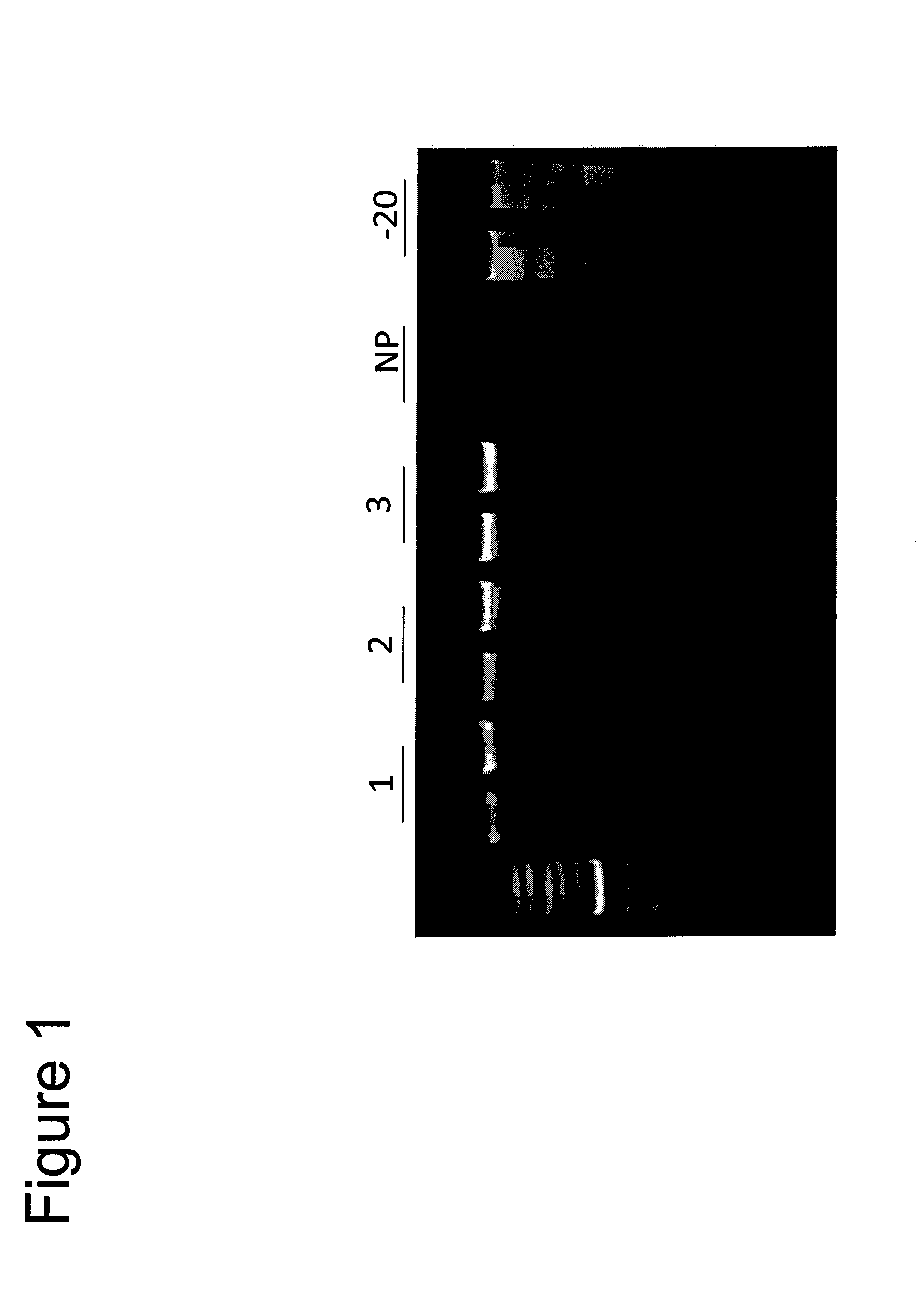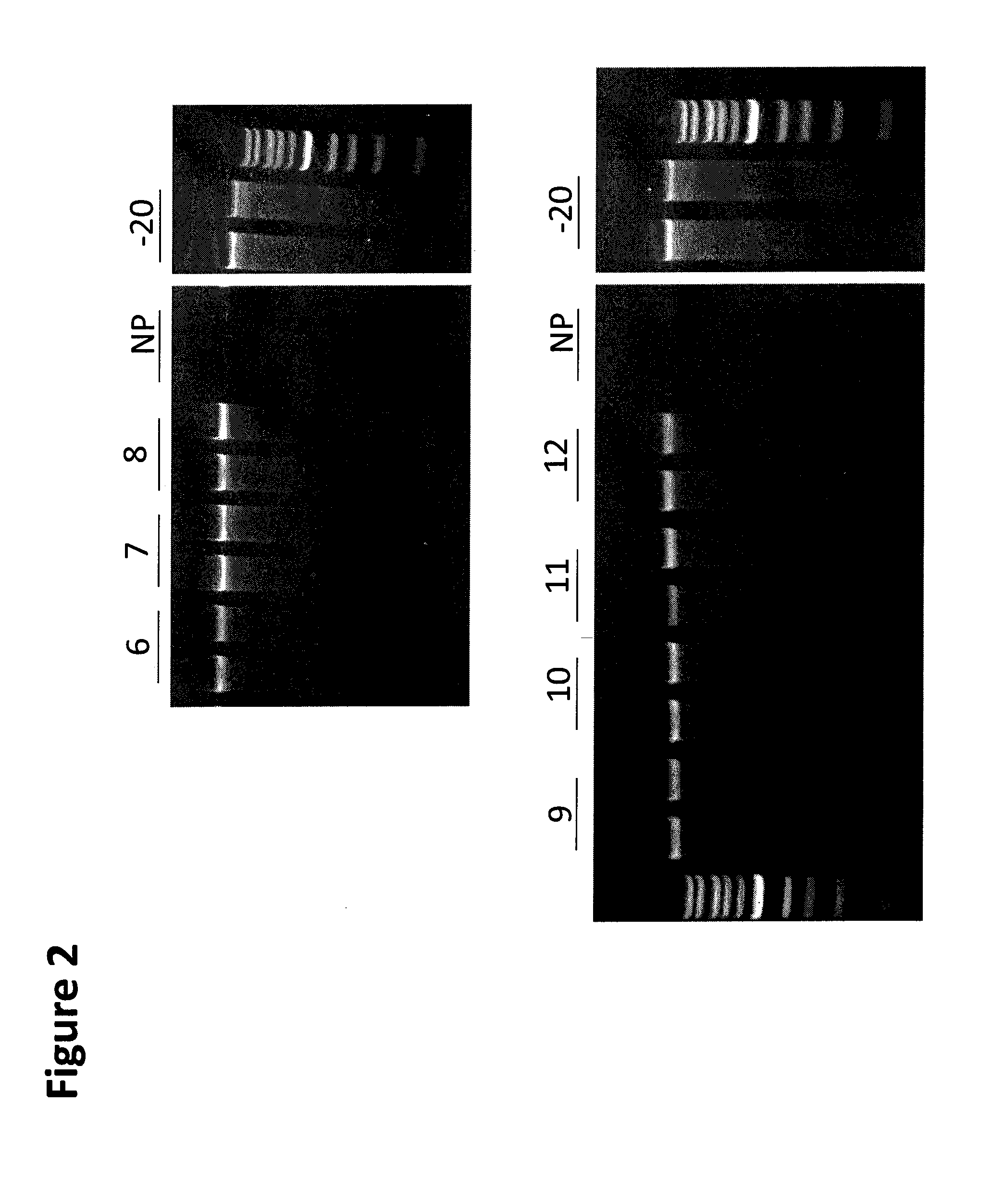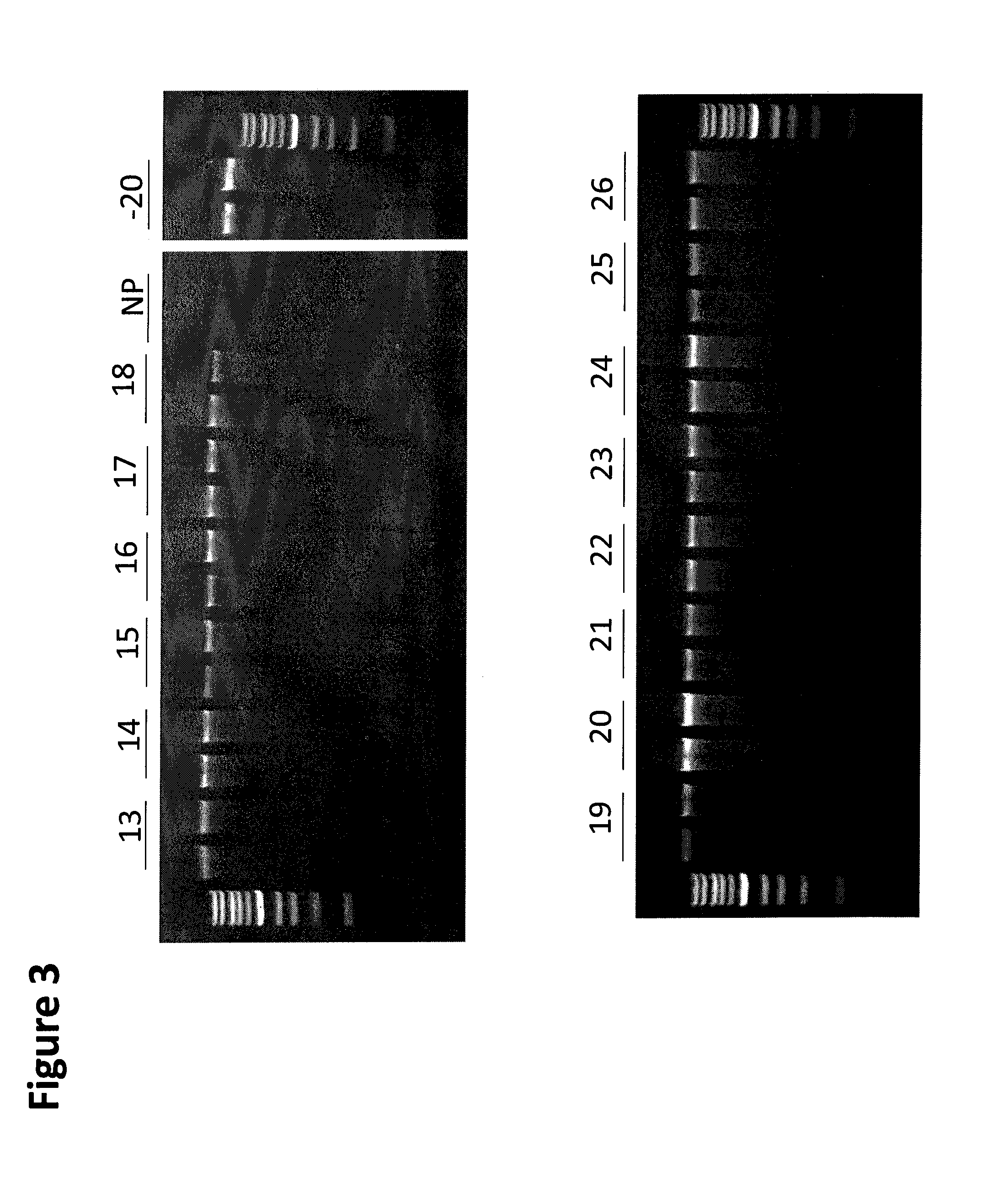Compositions for stabilizing DNA, RNA and proteins in saliva and other biological samples during shipping and storage at ambient temperatures
a technology of rna and proteins, applied in the field of compositions and methods for biological sample storage, can solve the problems of inconvenient maintenance of adequate low temperature, unreliable equipment, and disadvantages of both storage systems
- Summary
- Abstract
- Description
- Claims
- Application Information
AI Technical Summary
Benefits of technology
Problems solved by technology
Method used
Image
Examples
example 1
Storage of Saliva
[0147]This Example describes the preparation and characterization of a liquid-storable biological sample. In this and the following Examples, standard cell and molecular biology techniques were employed, essentially according to known methodologies (e.g., Sambrook, J., Fritsch, E. F. and Maniatis, T. (1989) Molecular Cloning: A Laboratory Manual, Cold Spring Harbor Laboratory Press, New York; Current Protocols, Nucleic Acid Chemistry, Molecular Biology, Wiley and Sons, 2003; Current Protocols, Protein Sciences, Cell Biology, Wiley and Sons, 2003). All reagents in this and the following Examples were from Sigma-Aldrich (St. Louis, Mo.) unless otherwise specified.
[0148]Stabilization of DNA in Saliva at Room Temperature for >90 days. Saliva was collected from a human donor and kept on ice during the experimental setup. The tube of saliva was mixed thoroughly and 1 mL aliquots were removed and each was mixed separately with an equal amount of formulations 2.1-2.3 (Table...
example 2
Stabilization of DNA in Saliva for 70 Days at Room Temperature
[0149]Saliva was collected from a human donor and kept on ice during the experimental setup. The tube of saliva was mixed thoroughly and 200 μL aliquots were removed and mixed with an equal amount of formulations 3.6-3.12 (Table 3) in screw cap polypropylene vials. Ten aliquots were prepared for each formulation tested as well as 10 unprotected aliquots and 10 frozen controls that were stored at −20° C. Except for the −20° C. controls all samples were held at room temperature in a cardboard sample box protected from light. After 70 days duplicate samples were removed and the DNA extracted from a 300 uL aliquot of each tube using the QiaAmp™ Mini DNA kit from Qiagen (Valencia, Calif.). Samples were eluted in 100 uL of AE buffer and a 10 uL aliquot from each DNA extract was loaded onto a 0.8% agarose gel and electrophoresed for 40 min at a constant 150 V. The gel was illuminated at 302 nm using a UV light box and the image ...
example 3
Stabilization of DNA in Saliva at Room Temperature for 70 Days
[0150]Saliva was collected from a human donor and kept on ice during the experimental setup. The tube of saliva was mixed thoroughly and 200 μL aliquots were removed and mixed with 150 uL of formulations 3.13-3.26 (Table 3) in screw cap polypropylene vials. Ten aliquots were prepared for each formulation and tested as well as 10 unprotected aliquots and 10 frozen controls that were stored at −20° C. Except for the −20° C. controls, all samples were held at room temperature in a cardboard sample box protected from light. After 40 days duplicate samples were removed and the DNA extracted from the sample using the QiaAm™ Mini DNA kit from Qiagen (Valencia, Calif.) according to the manufacturer's instructions. Purified DNA was eluted in 100 μL of AE buffer and a 10 μL aliquot from each DNA extract was loaded onto a 0.8% agarose gel and electrophoresed for 40 min at a constant 150 V. The gel was illuminated at 302 nm using a U...
PUM
| Property | Measurement | Unit |
|---|---|---|
| time | aaaaa | aaaaa |
| time | aaaaa | aaaaa |
| time | aaaaa | aaaaa |
Abstract
Description
Claims
Application Information
 Login to View More
Login to View More - R&D
- Intellectual Property
- Life Sciences
- Materials
- Tech Scout
- Unparalleled Data Quality
- Higher Quality Content
- 60% Fewer Hallucinations
Browse by: Latest US Patents, China's latest patents, Technical Efficacy Thesaurus, Application Domain, Technology Topic, Popular Technical Reports.
© 2025 PatSnap. All rights reserved.Legal|Privacy policy|Modern Slavery Act Transparency Statement|Sitemap|About US| Contact US: help@patsnap.com



